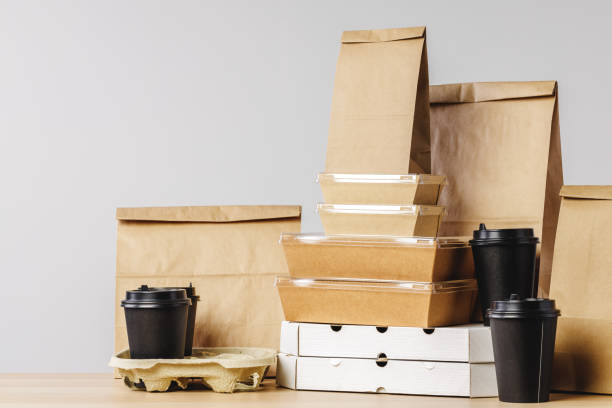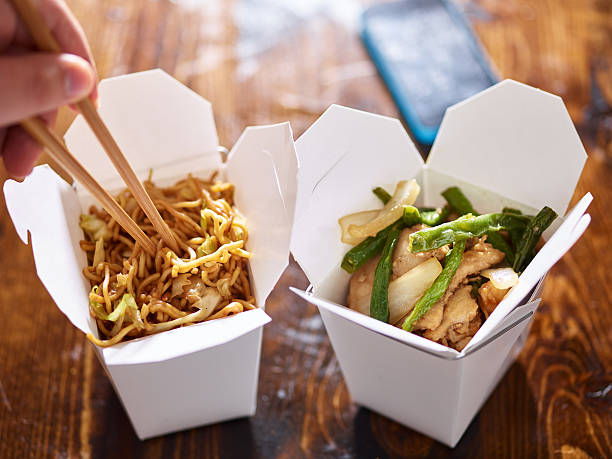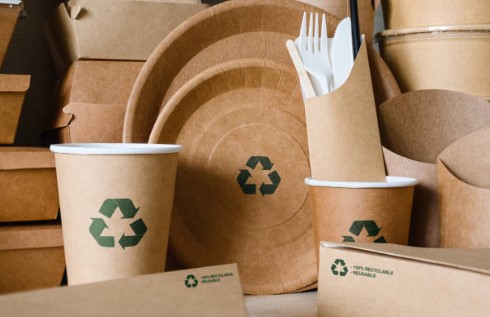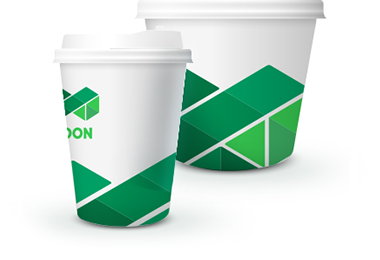Introduction: The Rise of PFAS in Food Packaging
Have you ever wondered what wraps your “big mac” or your go-to “fall harvest salad” from the local grocery stores? After years of enjoying those convenience foods, it’s high time we faced what lurks in our food packaging – the infamous PFAS in food packaging.
PFAS, or Per- and Polyfluoroalkyl Substances, the so-called “forever chemicals”, have taken the food packaging industry by storm. From paper food packaging to fast food wrappers and even fancy take-out molded fiber salad bowls, these chemicals are almost inescapable. A Consumer Reports investigation even found PFAS levels in Whole Foods Market soup containers!
With the increasing prevalence, it’s not just your burger that’s getting seasoned. PFAS compounds, despite being linked to significant health risks, are intentionally being added – transforming food containers into potential hazards.

Unpacking the PFAS: A Closer Look at Per- and Polyfluoroalkyl Substances
PFAS, short for Per- and polyfluoroalkyl substances, are a family of man-made chemicals that have been in use since the 1940s. These are called “forever chemicals” for a reason. They don’t break down and can build up over time, making them a near-permanent fixture wherever they’re found.
Found in things as every day as our plastic food package or as specific as our window box liners, these chemicals are also especially pervasive in food packaging materials. From the paper used to wrap your McDonald’s burger to the plastic that keeps your Costco Tupperware fresh, PFAS are everywhere. But why so ubiquitous? Well, scroll down, and let’s find out!
Reasons behind the Ubiquity of PFAS in Food Packaging
PFAS, despite its potential health risks, is loved in the food packaging industry. They’re resistant to water, oil, and heat – a trifecta that makes them ideal for food contact applications.
Imagine slurping down soup from a Whole Foods soup container or munching on a sandwich from a fast food joint. PFAS keeps your food hot, prevents oil-soaking, and stops the packaging from getting soggy. They tick all the boxes for convenience.
However, while they’re a boon to the packaging industry, they’re not quite a health food. Like a level-up sweet green is to your diet, PFAS in packaging could be a downer.
Recognizing the Dangers: PFAS Health Risks
If your take-out food packaging could talk, it might tell tales of PFAS, the “forever chemicals.” PFAS are notorious for their stubborn persistence in the environment and within human bodies, leading to a host of health concerns. Let’s ruminate over the potential human health effects of PFAS exposure:
| Immunological Effects | High concentrations of PFAS have been associated with a weakened immune response even in the face of vaccinations, making it harder for the body to fend off infections and diseases. |
| Reproductive & Developmental Problems | PFAS exposure can potentially lead to fertility issues in both men and women. It can also impact fetal development, leading to lower birth weights and early onset of puberty in offspring. |
| Endocrine Disruption | PFAS can mimic or interfere with the body’s natural hormones, leading to thyroid disease and other endocrine disorders. |
| Increased Cholesterol | Some studies show a troublesome link between PFAS exposure and higher levels of cholesterol, posing a risk of heart disease. |
| Kidney & Liver Damage | PFAS can accumulate in these organs, leading to potential function decline over time. They’ve been implicated in liver disease and kidney cancers in some studies. |
| Risk of Certain Cancers | Prolonged exposure to PFAS has been linked to an increased risk for certain types of cancer, particularly kidney and testicular cancers. |
| Obesity and High Blood Pressure | Emerging research suggests PFAS exposure could contribute to obesity and high blood pressure, exacerbating metabolic syndrome concerns. |
Remember, these health risks can span a lifetime as PFAS resist degradation—once they enter our bodies, they stick around, potentially stirring up trouble. That’s why it’s crucial to reduce PFAS exposure, starting with something as commonplace as food packaging.

Contamination Cycle: How PFAS Enter and Impact the Environment?
PFAS, the “forever chemicals,” have an insidious contamination cycle that endangers our environment. Starting from the use of PFAS-containing products like food packaging to their disposal, PFAS chemicals leach gradually into our soil and water bodies, persistently polluting our ecosystem.
Accidental spills and discharges during their production process further infuse these resistant chemicals into the environment. When such waste undergoes incineration or landfills, PFAS are released into the atmosphere and seep into groundwaters, respectively.
The subsequent story involves PFAS entering the food chain, accumulating and magnifying as they move up each trophic level. Their resistance to degradation enables distant and long-term contamination, affecting both human health and wildlife.
Airborne transport, often overlooked, is another way PFAS reach remote regions, escalating the global PFAS crisis. Moreover, the degradation of other chemicals can give birth to PFAS, invisibly adding to their environmental burden. Despite their invisible nature, the impact of PFAS is palpable and calls for their urgent management.
PFAS-Free Alternatives: A Hope for Business and Environment
Worried about how to proceed after committing to the PFAS detox for your business? Fear not. Alternatives to PFAS exist, and these are not only healthier for consumers but also friendlier to the environment. Let’s go through a few.
| * Pros | * Cons | |
| Polylactic Acid (PLA) Originating from renewable resources like cornstarch or sugarcane | – Bio-based and biodegradable. – Suitable for a variety of packaging applications. – Can be transparent and relatively – — Heat-resistant compared to other bioplastics. | – Requires industrial composting facilities to break down completely. – High production costs compared to conventional plastics. – Not suitable for high-temperature applications. |
| Bagasse | – High sustainability due to its sugarcane origins. – Biodegrades quickly. – Lightweight yet durable for food packaging. | – Not suitable for liquid foods due to absorbency. – May not be available in areas where sugarcane is not grown. – Decomposition can release methane, a potent greenhouse gas. |
| Beeswax Wraps | – Naturally antibacterial and antifungal. – Reusable and compostable. – Ideal for covering bowls or wrapping smaller food items. | – Not suitable for all packaging needs (such as liquids or warm foods). – Requires users to keep reapplying beeswax over time. – Allergenic for some individuals. |
| Uncoated Paper and Aluminum Foil | – Widely available and relatively inexpensive. – Biodegradable (paper) or recyclable (aluminum foil). – Suitable for various food packaging applications. | – Not resistant to oil or water without the application of a coating (which could potentially be a PFAS compound). – Aluminum production has high environmental impacts, including high energy use and waste production. – Recycled paper can sometimes be contaminated with ink or other substances. |
| Recycled PET (Polyethylene Terephthalate) | – Highly recyclable. – Contributes to waste reduction. – Heat-resistant and can be suitable for a range of food packaging applications. | – Not biodegradable. – Requires efficient recycling systems. – May not be suitable for all applications due to potential food safety concerns. |
Remember, though, just because it’s PFAS-free doesn’t mean it’s completely harmless, so be sure to check for other chemicals that might pose health risks in these alternatives. It all depends on the context of use, recycling facilities in place, and local regulatory factors. What works in one region might not automatically translate into global wisdom!
So, strive for a less toxic future, be smart about your choices, and invest in a healthier and greener tomorrow.

Regulatory Response: How Governments are Handling PFAS in Food Packaging
It may seem like a problem too big to handle, but governments worldwide aren’t beating around the bush trying to manage PFAS in food packaging. The rise of PFAS concerns has reeled in everyone from environmental health departments to federal governments. Let’s zero in on some of the actions they’re taking in this direction.
1. Enhancing Regulation: Governments are stepping up their game. They’re looking at not just regulating PFAS chemicals individually but also as a group. The searchlight is on, aiming to detect even the newest, less-studied PFAS – nothing is slipping under the radar!
2. Setting Standards: Different countries are setting their unique PFAS standards for food contact substances. It’s not just about banning PFAS. It’s more about how low can we set PFAS levels in food contact applications while maintaining product integrity. That’s where the competition lies!
3. Improving Testing: Apart from setting standards, governments are pushing for better testing of food packaging. From evaluating food containers to checking food soup containers for PFAS, the goal is detection. Immediate detection, to be specific.
4. Promoting Transparency: It’s all about clarity and honesty. Governments are urging companies to openly declare their PFAS use in packaging, pushing for more transparency in the sector.
5. Encouraging Alternatives: Governments are playing cheerleaders here, urging businesses to embrace PFAS-free alternatives. Canada, for example, has banned the use of long-chain PFAS in food packaging, opening new avenues of innovation for safer substitutes.
6. Aligning Research: Researching, studying, and updating is the way to go. Government bodies are teaming up with scientists and researchers to learn more and do more about PFAS.
7. Planning Clean-up: The Environmental Protection Agency (EPA) and other organizations globally are planning extensive clean-up operations for PFAS-contaminated sites.
The regulatory landscape worldwide isn’t going easy on PFAS anymore. A synthesis is occurring: a mix of precaution, foresight, and immediate action to tackle the PFAS issue. Because let’s face it, the PFAS problem isn’t a far-off problem – it’s here, it’s now, and it needs an iron-clad response.
Navigating the Switch: Step-by-Step Guide to PFAS-Free Packaging for Your Business
So, you’ve decided to do a PFAS detox for your business. Great! Here’s your step-by-step guide to adopting PFAS-free packaging:
Step 1: Have a Red Flag Alert: Continually test your packaging for PFAS in food packaging. This step involves regular inspection to detect whether there are PFAS substances in your existing packaging.
Step 2: Awareness: Ensure you’re aware of the different substances that make up your packaging. By understanding material composition, you can proactively identify and eliminate harmful chemicals.
Step 3: Communication: Connect with your suppliers about your business’s move to rid PFAS. Choose trusted manufacturers, such as Yoon, which are committed to providing reliable, PFAS-free options. (Click to see Yoon’s Green Food Packaging)
Step 4: Alternatives: Look past your PFAS-filled go-to solutions and start scouting for those elusive PFAS-free alternatives. Consider materials like PLA, bagasse, or uncoated paper based on your specific needs.
Step 5: Be Cautious: Just because it’s PFAS-free doesn’t mean it’s harmless; be sure to check for other chemicals that might pose health risks.
Step 6: Share: Make sure customers are aware of your ‘PFAS detox’. Transparency will help endear your brand more to consumers who are mindful of environmental concerns.
Indeed, this process may seem daunting at first; however, with a careful approach and one step at a time, your business can successfully transition to PFAS-free packaging.

Addressing Potential Roadblocks: Costs, Availability, and Consumer Response
But we all know this journey to PFAS-free isn’t just smooth sailing. There are roadblocks, of course. You’ll face challenges related to increased costs, access to PFAS-free alternatives, and possible customer pushback. But keep in mind that consumer reports and negative branding due to PFAS use can impact your business more.
Remember, consumers are becoming increasingly aware of potential safety concerns. Don’t be surprised if they start asking about your PFAS levels.
Advantages of Going PFAS-Free for Your Business
Embarking on the PFAS-free journey may seem challenging, but the benefits are numerous and far-reaching. Here are some noteworthy advantages:
Enhanced Consumer Trust
As consumers become more aware of the potential risks of PFAS, they’re likely to favor businesses that have consciously eliminated these chemicals from their packaging. Offering PFAS-free products will boost your brand’s reliability and resonance with consumers.
Regulatory Compliance
Governments globally are gradually rolling out stricter regulations for PFAS usage in food packaging. Early adoption positions your business as a leader and ensures fewer disruptions in the future.
Environmental Stewardship
Transitioning to PFAS-free packaging is an excellent way to showcase your business’s commitment to safeguarding the environment. This move can enhance your corporate social responsibility profile, attracting eco-conscious customers and potential investors.
Leadership in Market
Pioneering the switch to PFAS-free packaging can give your business a competitive edge—it signals innovation and responsiveness to an emerging issue.
Healthier Products
Offering PFAS-free packaging reduces consumers’ exposure to these chemicals and potential health risks. It’s a solid step towards promoting healthier food consumption practices.
Cost Savings
Although adopting PFAS-free might entail some upfront expenses, it could save your company money in the long run—consider potential savings in regulatory fines, customer lawsuits, or costly product recalls.
Improved Public Relations
Going PFAS-free can generate positive public relations. It’s a compelling narrative that your business cares about customer health and the environment—stories that can be leveraged in your marketing initiatives.
In essence, going PFAS-free isn’t just ethically sound —it’s also a smart, forward-looking business move. The benefits not only outweigh the initial investment but can spur new growth through improved customer loyalty, regulatory compliance, and enhanced market reputation. So why wait? Step into the future of food packaging with PFAS-free alternatives today!
Conclusion: Taking Charge of PFAS in Your Business’s Food Packaging
As businesses, the question isn’t “to PFAS or not to PFAS” anymore. It’s “How fast can we phase out PFAS?”
Being proactive than reactive will not just save you a lot of regulatory headaches, but also make you a beloved brand for your PFAS-wary customers. So, get to it – the front lines are waiting for you!
Contact Yoon today to get the perfect green food packaging for your business today!







